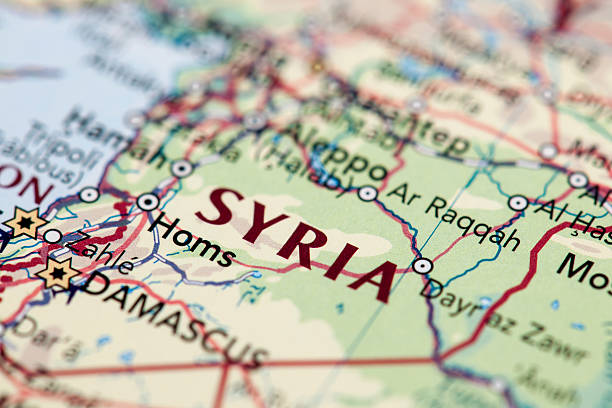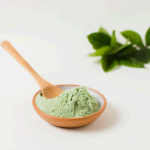Syria is not only a historical country with stunning architecture, but it is also a cultural country with delicious cuisine. Each dish here tells a story of ancient traditions, family recipes passed from one generation to the next, and the travels of visitors who carried their flavors with them across the Silk Road. For gastronomes, getting to know Syria is like reading a book in which every page is spiced, herbed and scented with the soul of the Middle East.
This traditional Syrian food guide will help you dive in and enjoy exploring Syria’s most popular dishes. Every taste is an open invitation to the nation it symbolizes, whether you’re enjoying the sweetness of Syrian pastries, the warmth of kibbeh, or the flavor of slow-cooked stews. And if you’re already thinking of a culinary holiday, to obtain your Syria visa or apply for a Syria visa from Oman through reputable travel companies such as Go Kite Oman, first step to experiencing this epic food journey.
The Origins of Syrian Traditional Food
Syrian food is the product of generations of culinary fusion and exchange. At the confluence of civilizations, Syria synthesized culinary influences from the Ottoman Empire, Persia and other parts of the Middle East. But what Syrian food really represents is its own special interpretation of these influences, melded together into something singular and genuine.
Bulgur, chickpeas, lentils, fresh herbs, lamb, olive oil and spices with a rich, warm aroma form a base that most Syrian meals are built upon. Syrians take hospitality very seriously, and food is commonly perceived as a means to bring people together. From teeming street food stalls in the streets of Damascus to lavish feasts in family homes, in this part of the world, food is more than food — it’s a jubilant celebration.
Must-Try Traditional Dishes of Syria
Kibbeh- The National Dish of Syria
No Syrian food guide would be complete without kibbeh, the nation’s favorite dish. Kibbeh can be fashioned in many different ways, be it as fried croquettes, baked casseroles or, in some instances, the raw meat patty that shares an affinity with steak tartare. Every region of Syria has its variation, its kibbeh, so to speak, giving the dish as much a sense of place as an identity.
Fatteh – Layers of Flavor
Fatteh, which can be a dish or a genre of dish, is comfort food to the max, layered with crunchy pita bread, chickpeas, yogurt, tahini and sometimes lamb or chicken. A dish often eaten for breakfast and occasionally for dinner, fatteh is all about balance of texture and flavor, of lightness and heartiness, and it reminds me that Syrian food is more than a meal — it’s comfort, it’s warmth and it’s wholesomeness.
Shawarma and Falefel – Street food of heaven.
If you stray into the streets of Syria, you can’t help but walk past do-it-yourself shawarma and falafel shacks like the bright ones in the Istanbul alley, drew used to pick up an after-hours snack while working as a freelance journalist there years ago: marinated thin slices of meat (lamb or chicken) cooked on a vertical spit and served with garlic sauce and pickles. Other popular street food is falafel, deep-fried chickpea patties, that has gained international fame.
Yabrak – Stuffed Grape Leaves
Yabrak (a type of dolma) involves stuffing grape leaves with rice, ground meat and spices and slow-cooking until they’re tender. It is a dish that is regularly made for family, friends and special events, representing being hospitable and taking care of others.
Mujaddara – Simple yet Rich
The Syrian home cook is incredibly practiced, and the home cooking is out of this world.” This unpretentious combination of lentils, rice and caramelized onions is a standard in Syrian homes. But as simple as it is, mujaddara represents the heart of Syrian cooking: Placing humble ingredients in skillful hands, and having them emerge perfectly seasoned.
Manakish – The Syrian Flatbread
Manakish is the “Syrian pizza,” as it is often called. Za’atar bread (manakeesh) for example is the baked flatbread pies that people sell on the street, with some za’atar, cheese or minced meat. Ranked among most Syrians’ favorite breakfast foods, manakish is a spicy dish that’s also easy to eat on the go as you explore Syrian cities.
Maqluba – The Upside-Down Dish
The literal meaning of Maqluba is “upside down.” It is a visually striking, multi-layered rice dish that is served upside down on the table and is packed with eggplant, potatoes, pork, and spices. The beautiful look of this dish makes it the star at family get-togethers.
Desserts – Sweet Traditions
Syrian desserts are legendary. Baklava, knafeh (shredded pastry with cheese and syrup) and ma’amoul (stuffed cookies with dates or nuts) are good representatives of the nation’s sweet love. These desserts are usually served with Arabic coffee or mint tea, sweetening every celebration.
Traditional beverages have also found their place in this traditional Syrian food guide. Tea is a staple and the usual it GHA tea is often served with mint or cardamom. The dark, aromatic Arabic coffee is a staple of Syrian hospitality. A cool substitute is the jallab, a grape molasses drink made with pine nuts and rose water.
Food as Cultural Connector in Syria
Food in Syria is inextricably linked not only to primarily sharing rather than the act of eating itself. Enough is never enough, and guests are presented with more than they can possibly eat: Abundance is a sign of generosity. Flight With street food and fancy dining alike, food culture here is the embodiment of togetherness, respect and hugs.
Every meal has a history, whether it’s a modern twist on a Damascus staple or an ancient dish from war-torn Aleppo, as visitors who let themselves become a part of Syrian dining customs will soon discover.
In Search of a Meal in Syria
Should you wish to taste these flavors on their home ground in Syria, it makes for a remarkable journey. Whether you are wandering through the crannied souks or sitting at a family table, the country’s dishes will tell you of centuries of stories.
To save yourself the trouble, get your visa for Syria ahead of time. If you are in Oman to get a visa for Syria from Oman through Go Kite Oman is hassle free arrangements, so that you focus completely on your Foodie journey.
Conclusion:
“It’s not just a cuisine, it’s a living history of trade, culture and hospitality,” Dr. Reignier said of Syria’s cuisine. Any plate — from the iconic kibbeh to the delicate flavors of yabrak or the sweets of knafeh — carries with it the history of a people for whom food has been an essential part of their identity for millennia. A traditional Syrian food guide is more than a list of recipes for any traveler, it’s an invitation to taste a culture that is warm, welcoming, and robust with stories.
For those wanting to travel to experience this unique cuisine, make sure to apply for your Syria visa ahead of time. And if you’re coming from Oman, Syria visa from Oman by professional providers like Go Kite Oman, can ensure you have have a hassle-free trip. But with every bite you’ll unearth, not only flavors, but the spirit of Syria past.



